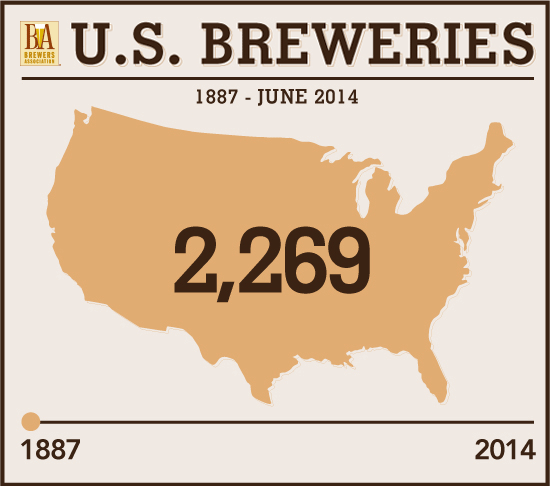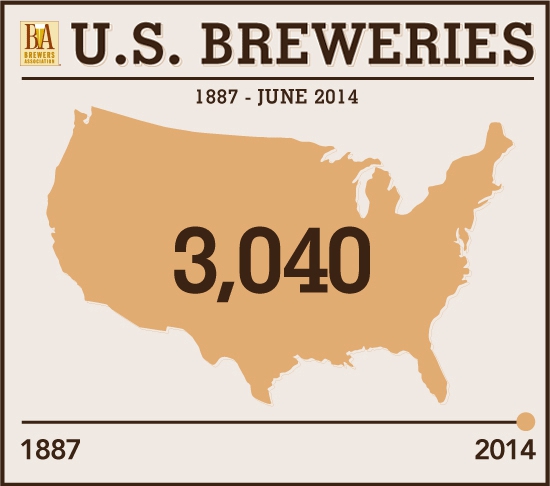A few numbers illustrate the heady rise of beer in the United States. In 1983, there were only 80 breweries operating across the nation, the smallest count for at least 150 years. At the end of last year, that total had surged to 2,722 breweries.
And this June, the number of operating U.S. breweries reached an astounding 3,040, with nearly 2,000 more in the planning phase. Let all of America’s beer drinkers now take a moment to lean forward and issue a joyful BRRAAAPPP over their favorite tipple’s meteoric success.
These figures come from Bart Watson at the industry group Brewers Association, who alleges that today the “majority of Americans live within 10 miles of a local brewery.” Watson also says this is probably the first time (“probably” because the records are a little murky) that the brewery population has surpassed 3,000 since 1873, when the IRS logged 4,131. That’s not to say that the 1870s, rather than now, should be considered the boom-time for beer in the U.S. Part of the reason there were so many breweries back then was because they hadn’t streamlined the ways to make the process efficient, including refining refrigeration and automation.

Watson, who wins today’s award for best job title with “chief economist for the Brewers Association,” claims that despite some worries there is not a “beer bubble” about to burst in America. However, he does think that breweries should prepare for more intense competition and pay particular heed to the quality of their products. That last point is being echoed on the forums of Beer Advocate, where one person rails that new breweries need to “really step up their game and try to make really awesome (not just good) beer.” Watson elaborates:
What it does not mean is that we’ve reached a saturation point. Most of the new entrants continue to be small and local, operating in neighborhoods or towns. What it means to be a brewery is shifting, back toward an era when breweries were largely local, and operated as a neighborhood bar or restaurant. How many neighborhoods in the country could still stand to gain from a high-quality brewpub or micro taproom? While a return to the per capita ratio of 1873 seems unlikely (that would mean more than 30,000 breweries), the resurgence of American brewing is far from over.
In support of this argument is the fact that the largest slice of America’s beer pie (recipe to come) is local, smaller-scaled operations. Out of the 2,722 U.S. breweries in operation at the end of 2013, a full 1,376 were microbreweries and 1,202 were brewpubs.
What will the country’s sudscape look like a few years from now? Watson says to expect big beer-production growth rates in North Dakota, Alabama, and West Virginia. That’s because these states, along with a few others, are “growing off small bases, and so even if they aren’t adding the most new barrels in absolute terms, their percentage growth rates are still quite impressive.”
Source: http://www.citylab.com/


